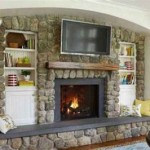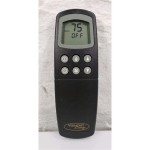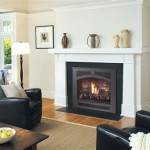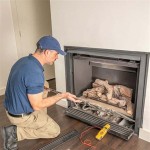Outdoor Fireplace Kitchen: Elevating Outdoor Living Through Culinary and Warmth
The outdoor fireplace kitchen represents a sophisticated extension of the home, seamlessly merging the comforts of indoor culinary practices with the allure of outdoor living. This architectural feature transcends the simple backyard barbecue, offering a year-round space for cooking, entertaining, and relaxation. The integration of a fireplace with a fully functional kitchen creates a focal point that enhances the aesthetic appeal of the outdoor landscape and provides a practical and inviting area for social gatherings.
The design and construction of an outdoor fireplace kitchen require careful consideration of several factors, including the available space, preferred cooking style, desired aesthetics, and local building codes. A successful project will seamlessly blend functionality with visual appeal, creating a space that is both practical for food preparation and comfortable for social interaction. This article will explore the key elements involved in planning, designing, and implementing an outdoor fireplace kitchen, highlighting the benefits and considerations associated with this increasingly popular home improvement trend.
Planning and Design Considerations
The initial stages of developing an outdoor fireplace kitchen involve thorough planning and design. This phase determines the overall success of the project and requires a clear understanding of the homeowner's needs, preferences, and budget. Factors such as space constraints, desired features, and long-term maintenance should be carefully evaluated.
Firstly, assessing the available space is paramount. The size and layout of the outdoor area will dictate the scope of the kitchen and fireplace. A sprawling backyard offers more flexibility in design and appliance selection, while a smaller patio may require a more compact and efficient layout. Consider the flow of traffic around the kitchen and fireplace, ensuring that there is ample room for cooking, serving, and entertaining.
Secondly, the intended use of the outdoor kitchen must be defined. Will it be primarily used for casual barbecues or more elaborate culinary creations? The answer to this question will influence the choice of appliances, countertops, and storage solutions. Homeowners interested in grilling may prioritize a high-end grill, while those who enjoy baking may require a pizza oven or smoker. The design should reflect the homeowner's cooking style and social habits. Frequency of usage and types of meals prepared will also influence material choices.
Thirdly, aesthetic considerations play a crucial role in the design process. The outdoor fireplace kitchen should complement the existing architecture of the house and blend seamlessly with the surrounding landscape. Consider the use of natural materials such as stone, brick, and wood to create a cohesive and visually appealing space. The style of the fireplace should be consistent with the overall design of the kitchen, whether it be rustic, modern, or traditional. Color palettes, textures, and lighting should complement each other and create a warm and inviting atmosphere.
Finally, understanding local building codes and regulations is essential. Permits may be required for the construction of an outdoor fireplace kitchen, and it is important to ensure that the design complies with all applicable codes related to fire safety, gas lines, and electrical wiring. Consulting with a qualified architect or contractor can help navigate these requirements and ensure a smooth and compliant construction process.
Key Components of an Outdoor Fireplace Kitchen
An outdoor fireplace kitchen comprises several essential components that work together to create a functional and enjoyable outdoor living space. These components include the fireplace itself, cooking appliances, countertops, storage solutions, and seating areas. The selection and arrangement of these elements contribute significantly to the overall usability and aesthetic appeal of the outdoor kitchen.
The fireplace serves as the central focal point of the outdoor kitchen. It provides warmth and ambiance, extending the usability of the outdoor space into cooler months. Fireplaces can be wood-burning, gas-burning, or electric, each with its own advantages and disadvantages. Wood-burning fireplaces offer a traditional, rustic feel, but require a constant supply of firewood and proper ventilation. Gas-burning fireplaces are more convenient and require less maintenance, while electric fireplaces are the easiest to install and operate. The style of the fireplace should complement the overall design of the kitchen, whether it be a traditional brick fireplace, a modern concrete fireplace, or a sleek stainless steel fireplace. Furthermore, the dimensions of the fireplace should be in proportion to the size of the outdoor space.
Cooking appliances are another critical component of an outdoor fireplace kitchen. The choice of appliances will depend on the homeowner's cooking style and preferences. Popular options include grills, smokers, pizza ovens, side burners, and refrigerators. Grills are a staple of outdoor cooking, and can be either gas-powered or charcoal-powered. Smokers are ideal for slow-cooking meats and vegetables, while pizza ovens add a unique culinary touch. Side burners provide additional cooking surface for sauces and side dishes, and refrigerators keep beverages and ingredients cold and readily accessible. The placement of these appliances should be carefully considered to optimize workflow and efficiency. Consider appliance location relative to the fireplace to optimize the cooking experience.
Countertops provide a workspace for food preparation and serving. They should be durable, weather-resistant, and easy to clean. Popular countertop materials include granite, concrete, stainless steel, and tile. Granite is a classic choice that is both durable and aesthetically pleasing. Concrete offers a modern, industrial look and can be customized with various colors and finishes. Stainless steel is hygienic and easy to clean, while tile offers a wide range of design options. The height of the countertops should be comfortable for the user, and the layout should provide ample workspace for food preparation. Incorporating a bar area with countertops provides a space for guests to sit and socialize while the cook prepares the meal.
Storage solutions are essential for keeping the outdoor kitchen organized and functional. Cabinets, drawers, and shelves provide storage space for cooking utensils, serving dishes, and other supplies. Cabinets can be made from a variety of materials, including stainless steel, wood, and composite materials. Stainless steel cabinets are durable and weather-resistant, while wood cabinets offer a more traditional look. Composite materials are a low-maintenance option that is resistant to rot and insects. The layout of the storage should be carefully considered to optimize space and accessibility. Consider weatherproofing and security when selecting outdoor storage solutions.
Seating areas complete the outdoor fireplace kitchen by providing a space for guests to relax and socialize. This area can be a simple patio set, a built-in bench, or a more elaborate outdoor dining area. The seating should be comfortable and inviting, and the layout should encourage conversation and interaction. Consider adding outdoor lighting to create a warm and inviting atmosphere. Fire pits or other outdoor heating elements can extend the usability of the seating area into cooler months. The selection of furniture and accessories should complement the overall design of the outdoor kitchen and create a cohesive and inviting space.
Materials and Construction Considerations
The choice of materials and construction techniques is crucial to the durability and longevity of an outdoor fireplace kitchen. The materials must be able to withstand the elements, including sun, rain, wind, and temperature fluctuations. Proper construction techniques are essential to ensure that the kitchen is structurally sound and safe to use.
When selecting materials, prioritize durability and weather resistance. Stone, brick, and concrete are all excellent choices for the fireplace and surrounding structure. These materials are not only durable but also aesthetically pleasing and can be customized to match the overall design of the outdoor kitchen. Wood can be used for accents and trim, but it should be treated to resist rot and insects. Stainless steel is a popular choice for appliances and countertops, as it is hygienic, easy to clean, and resistant to rust. Composite materials are a low-maintenance option for cabinets and other components that are exposed to the elements. Consider the long-term maintenance requirements of each material and choose options that are easy to clean and maintain.
Proper construction techniques are essential to ensure that the outdoor fireplace kitchen is structurally sound and safe to use. The foundation should be level and stable, and the fireplace should be built according to applicable building codes. Gas lines and electrical wiring should be installed by a qualified professional, and all connections should be properly sealed to prevent leaks. The structure should be properly ventilated to prevent the buildup of smoke and fumes. Consider the drainage of the outdoor kitchen to prevent water damage. Gutters and downspouts can help to divert rainwater away from the structure, and permeable paving materials can allow water to drain into the ground.
In addition to durability and safety, consider the environmental impact of the materials and construction techniques. Choose sustainable materials such as reclaimed wood, recycled concrete, and low-VOC paints and finishes. Implement energy-efficient appliances and lighting to reduce energy consumption. Consider the use of rainwater harvesting and greywater recycling to conserve water. By incorporating sustainable practices into the design and construction of the outdoor fireplace kitchen, it is possible to create a beautiful and functional space that is also environmentally responsible. Proper planning and material selection will contribute significantly to the project's sustainability rating.
Building an outdoor fireplace kitchen is a significant investment that can greatly enhance the enjoyment of the outdoor living space. By carefully considering the design, materials, and construction techniques, a space can be created that is both beautiful and functional, providing years of enjoyment for the homeowner and their guests. The integration of a fireplace with a fully functional kitchen creates a focal point that enhances the aesthetic appeal of the outdoor landscape and provides a practical and inviting area for social gatherings.

Outdoor Fireplace Kits Kitchens Belgard

How To Plan Your Outdoor Kitchen With A Fireplace Sonoma Backyard

Outdoor Living Space With Fireplace Why You Should Have One

60 Creative Outdoor Kitchen Ideas For Your Home In 2024 Covered Patio Fireplace Designs Backyard

Dallas Outdoor Kitchens Gallery Of Living Fireplaces Pools

Outdoor Fireplace Kitchens Ek Series By Escea Company Selector

70 Awesomely Clever Ideas For Outdoor Kitchen Designs Stone Fireplaces Fireplace Design

Outdoor Fireplace Kits Kitchens Belgard

Escea Ek950 Outdoor Kitchen Fireplace Hawkesbury Heating

Outdoor Fire Pits And Fireplaces Katy Houston Greater Areas
Related Posts








